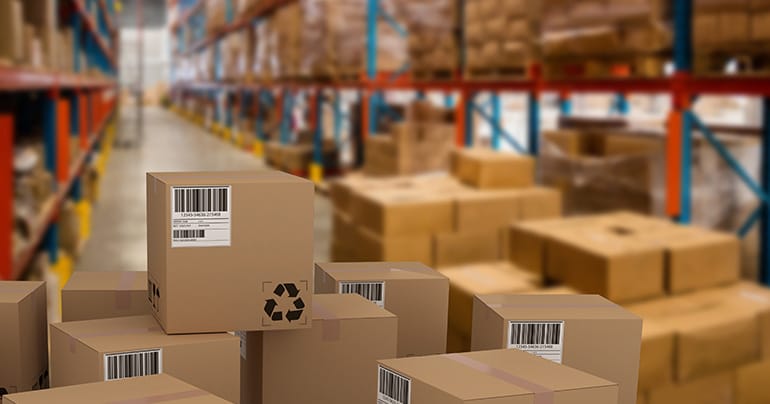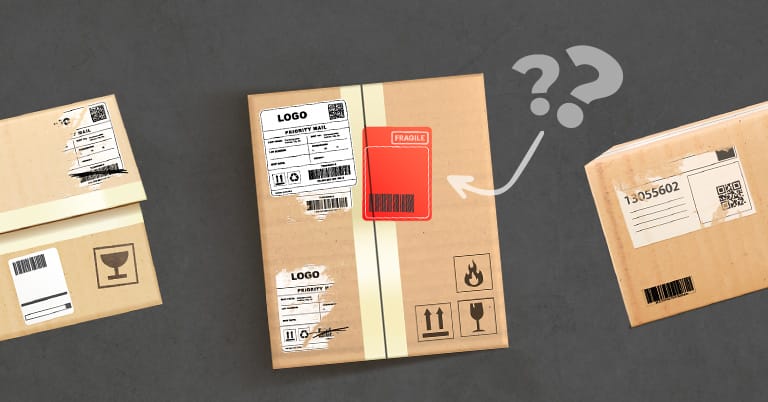This won’t be the most thrilling article you ever read. Some topics just fall into the ‘boring but important’ category – and freight paperwork is definitely one of them. Accurate paperwork is probably the biggest factor in getting your shipping process right.
There’s a lot of documentation required in freight shipping. The fact that so much hard copy paperwork is needed to get items from A to B almost feels like an outlier in an increasingly paperless world. While tech solutions have come a long way in logistics, as long as physical packages are being sent, printed labels will continue to feature heavily.
Kicking off the shipping process, customer orders might come in via website, email, or directly via a sales team. Those orders generate a ‘packing list’, which prompts staff to find the relevant stock in the warehouse, to pick and pack it. Once packed, a shipment – whether a single item or many – requires several pieces of documentation to ensure it reaches its destination.
So, what default documents do you need? Why do they matter? And how can you streamline the process without sacrificing accuracy?
CONTENTS
- What documents are required for freight shipping?
- What happens if freight paperwork isn’t compliant?
- The benefits of streamlined shipping documentation
- Post-delivery paperwork
- Summary
What documents are required for freight shipping?
Transport providers have very specific requirements around documentation. The key documents involved are item labels, consignment notes, manifest paperwork, and – where required – dangerous goods paperwork.
Ultimately, it boils down to compliance and accuracy, ensuring consignments get to the right recipient at the right address, on time and intact.
Item labels
The first component is the item label. These labels contain the basic recipient information such as address, carrier tracking number, and any special instructions for handling.
Consignment notes
The next component is a consignment note, also known as a ‘con note’ or ‘delivery note’. These outline the shipment, including sender and receiver information. It’s similar to the item label, but relates to the actual contents of the shipment.
A consignment can contain multiple items going from the same location to the same recipient on the same day – so the consignment note lists out all items included within the shipment.
Manifest paperwork
Next up is manifest paperwork. This is a comprehensive list of all the items, plus all the consignments being transported in a particular shipment on a particular vehicle. This summary is used primarily for logistical planning purposes, as well as tracking.
Basically, it tells transport providers how they can best pack their vehicles. From there, they can formulate a run plan – in other words, what order they make their deliveries in and which route they take.
Dangerous goods
How can you handle shipping documentation for items that require special handling? Good question.
Dangerous goods paperwork is only required when moving hazardous materials. This includes aerosols like hairsprays and deodorants, or lithium batteries, explosives, firearms, and so on.
This documentation provides extra info – things like the nature of the goods, potential risks, and any necessary precautions required for handling and transportation. This might include details such as whether it’s a marine pollutant (if travelling by water). Can it travel through tunnels? Who’s authorised to move it? Etc.

Only certain carriers or services will take dangerous goods. MachShip has the ability to filter suitable dangerous goods carriers, in addition to providing compliant paperwork.
While there are many compulsory and common data points across these document types, the structure and design of them can vary greatly from one carrier to another. They’ll have their own logo, as well as multiple barcodes potentially. The font and sizing might also be very different.
These variations in layout and specs can easily become an obstacle for transport providers who are in the business of speed and efficiency. If something isn’t easily scanned, or doesn’t make sense to them at a glance, it’s likely to be left behind or returned so they can get on with their other deliveries.
What happens if freight paperwork isn’t compliant?
In short, if it’s not compliant, it’s not moving.
For consignments without the requisite paperwork – or unclear labelling – the shipments might get picked up, but they won’t go beyond the carrier warehouse and will most likely be returned to sender.

It’s important to understand that carriers will refuse to move goods if the paperwork doesn’t meet their specifications. Drivers are working at such a fast pace – if the barcode can’t be read or it’s in the wrong spot, for example – they can’t afford to spend extra time trying to decipher it. If something’s not consistent or doesn’t look familiar, it’ll just be rejected.
Needless to say, this can result in costly delays, additional admin and delivery charges, not to mention unhappy customers.
The benefits of streamlined shipping documentation
An effective freight management system helps to generate all the documentation you need. When your consignment paperwork process is streamlined in one platform, you’ll see tangible improvements in:
- Accuracy
- Compliance
- Risk mitigation (for hazardous material)
- Customer satisfaction
- More efficient operations overall
A big benefit of having a ‘one-stop-shop’ for freight paperwork is having compliance managed for you, while documentation is automated. This helps to prevent delays, fines, or any legal issues. It also facilitates accurate tracking, which allows real-time monitoring and visibility – a must in today’s consumer landscape.

In contrast, if you’re having to generate documentation individually through separate carrier platforms, the burden falls on your business to keep up with any new processes relevant to each specific carrier. If carriers change their paperwork structure, you need to manually keep up to date with these changes and adapt your labelling accordingly.
An all-in-one management platform ensures your paperwork is always up to spec. MachShip ensures paperwork compliance and uniformity across 200+ transport providers.
Learn about MachShip’s market-leading carrier integrations.
Post-delivery paperwork
Further downstream, once items have been delivered, you’ve still got to deal with the invoice that comes from the transport provider. Where MachShip makes a difference here is allowing users to upload their invoices directly into the platform.
This enables businesses to identify any potential discrepancies compared to the initial quote from the carrier. From here, senders can also manage invoice reconciliation and see where they might be entitled to any credits or refunds.
This functionality is necessary and therefore pretty common across freight management platforms. MachShip’s strength comes from its larger integrated carrier network. They’re able to do this for more carriers than other platforms. They’re also one of the few platforms of its type that cover dangerous goods paperwork.
Summary
While printed freight paperwork can still feel like an antiquated process in an increasingly digital space, the right freight management tools can ensure much more accurate and user-friendly outcomes.
Legal compliance will remain the biggest factor when it comes to paperwork, but ensuring the process is as seamless as possible keeps every stakeholder on the same page – from sender to carrier to receiver – keeping your customers happy and giving your business the best chance to grow.

